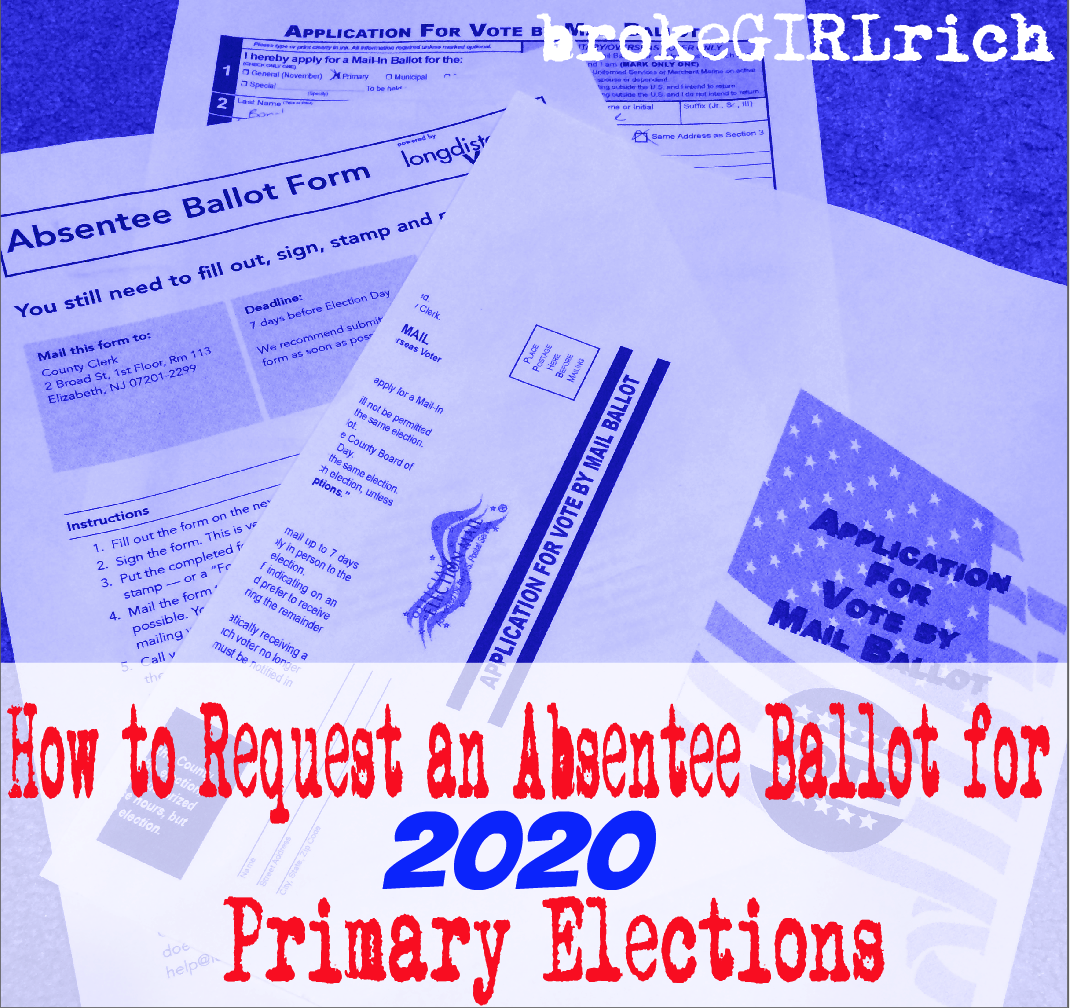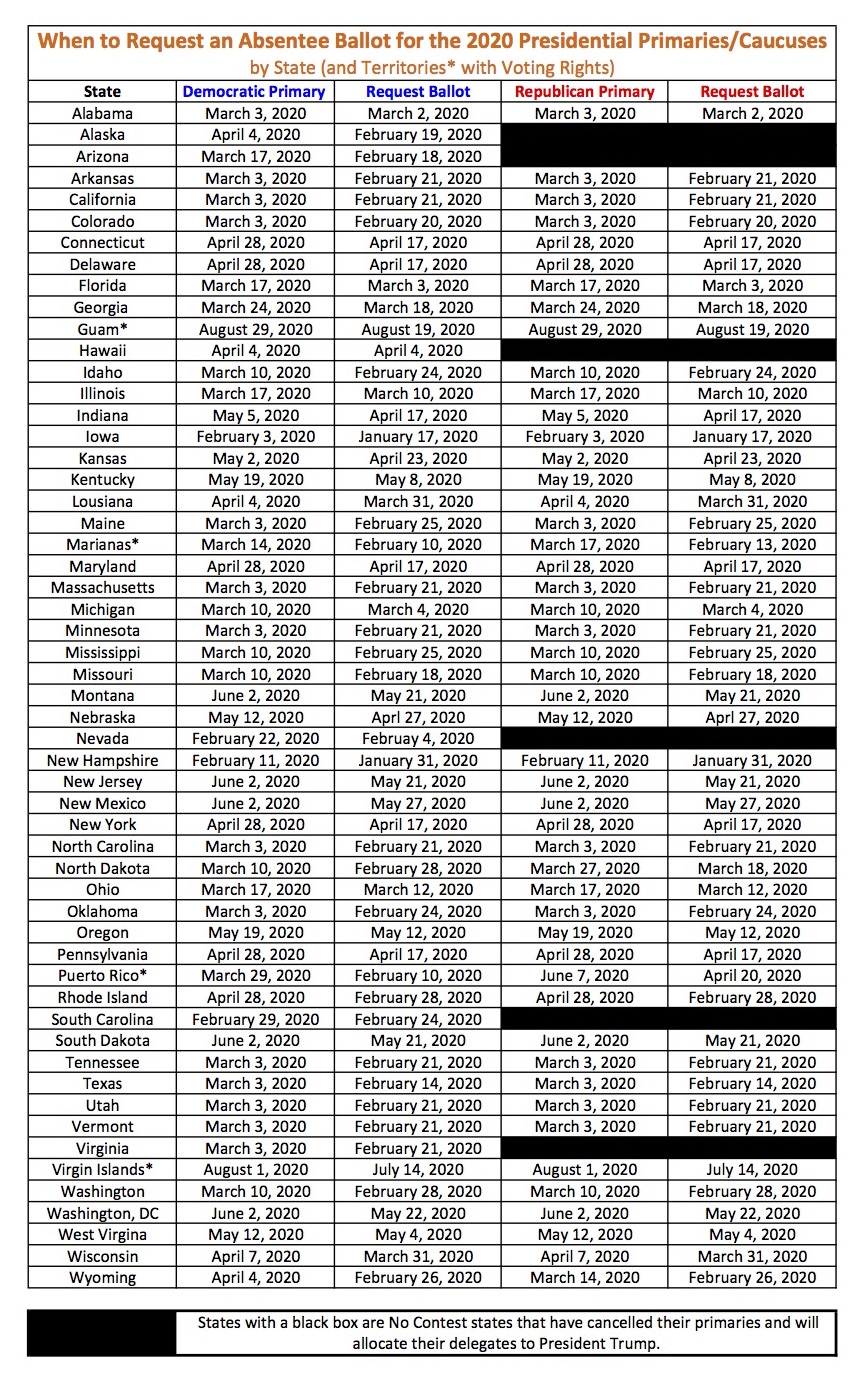
It’s that time again – the American presidential primaries are coming up. And if you work in the arts, there’s a good chance you won’t be anywhere near home come election day. And you might have some strong feelings about who should or shouldn’t be our president.
Or you may have some lukewarm feelings. Or you may just be generally confused – if it’s the latter, it is still worth spending a few minutes looking into the candidates stances on issues that matter to you (like, ya know, if you read this website, funding for the arts – or whatever issues float your boat). Personally, there’s a lot of confusing language used on TV and I prefer websites with clear grids that break down how a candidate has voted on issues, etc. without some random newscasters opinions harped on top of it.
You can check out comparative info on the Democratic candidates here. Trying to find a clear comparative guide about Republican candidates (there are three other candidates challenging President Trump, as of this post), has proven pretty difficult, but here is at least a summary of each of them. Of course, all news has some kind of bias – so if you have suggestions of other places people can check, drop them in the comments.
There are plenty of conspiracy theories about how voting is more difficult than it needs to be, but I do have to say that giving each state a different day to vote for the primaries is one of the things that makes me think maybe the conspiracy theorists aren’t completely insane.
You also need to pay attention regarding whether you plan to vote in the Democratic or Republican primary. A lot of the time, you can only vote in the primary election of whatever party you are registered under. To make this process even more complicated, not all states have their Democratic and Republican primary on the same day – so be sure to double check which date is actually the one you need for your home state.
Wondering if you can vote for whoever you want, even if they’re not in your usual political party? An open primary is when you can vote for anyone in a primary election, irregardless of whether you are a registered Democrat or Republican (or Libertarian, Green Party… whatever your official affiliation may be). States that have open presidential primaries are :
- Alabama
- Arkansas
- Colorado
- Georgia
- Illinois
- Indiana
- Massachusetts
- Minnesota
- Mississippi
- Missouri
- Montana
- New Hampshire
- North Carolina (only for unaffiliated votes – meaning you registered but didn’t pick a party)
- North Dakota
- South Carolina
- Tennessee
- Texas
- Vermont
- Virginia
- Washington
- Wisconsin
All other states have closed primaries, which means that if you are a registered Republican, you can only vote for the Republican presidential candidate, and the same is true if you’re a Democrat.
Additionally, the exact manner in which you request an absentee ballot varies from state to state. Score another point for bureaucratic mass confusion. But I’m here to break it down for you today – whether you’re a Montana cowboy off working as a drummer on a cruise ship or a New York City socialite dancing your heart off in a show in China, just find the state you are registered to vote in below, follow the instructions and get your vote on!
Fortunately, someone far smarter than me created this awesome website called Vote.org where you can enter a few quick bits of information and get an absentee ballot registration form sent to you.
Here are the steps to request an absentee ballot so you can vote in the presidential primaries in the next few months.
This is important: YOU NEED TO REQUEST THE BALLOT IN ADVANCE OF THE PRIMARY ELECTION. PLAN TO REQUEST YOUR BALLOT THREE WEEKS IN ADVANCE – AT LEAST.
Now, to make this process a bit more convoluted, this absentee ballot request form is not your ballot and does not contain your vote. It is a form that requests that ballot. But it is the first step you need to take.
And trust me, I get it, if you’re on a hit it and quit it tour (like the kind I’ve been doing the last year and a half), trying to figure out where to have things mailed is a pain. However, you can always get mail delivered to your hotel. Plan ahead and request your ballot is sent to the hotel you’ll be at 10 days from when you send out the request. In a worse case scenario, if you don’t know your hotel, have it sent to the theater.
To send mail to a future hotel, include the hotel’s address, care of Your Name and your arrival date. For example:
Holiday Inn New Mexico
c/o Mel brokeGIRLrich Arrival: 2/22/20
123 Hotel Street
Albuquerque, NM 12345
To send mail to a future venue, include the venue’s address, care of Your Name and your show’s name. For example:
Lincoln Center
c/o Mel brokeGIRLrich PottedCliffordTrain
123 Lincoln Center Street
New York, NY 12345
Also, if you have a Tour Manager, you can ask them if there is a better way to receive mail on tour. Sometimes they prefer that you address the mail to them, because venues know to give them all of the show’s mail when they arrive.
Note that the Request Ballot deadline is the date they have to receive your request by – and, trickily enough, you might request a ballot in time (for the states that the due date is the day before the election) but there’s no way the postal service could ever possibly get a ballot back to you in time to actually vote since votes are due to be postmarked by Election Day at the latest.
The Request Ballot deadline also reflects the latest date of the options available (mail, online, and in person) and counts back from Election Day in business days, not including weekends. Usually, if you can request an absentee ballot in person, you have a few more days grace period – though for those of you on tour, this seems like an unlikely option.

SO – despite the dates in the chart, request your ballot at least three weeks in advance and mail it back a week in advance. This will solve your voting issues. Unless you live in Rhode Island, then make sure you request that ballot a month out.
Now that you have the ballot, what do you have to do? Well, different states have different due dates for their ballots, but the strictest state requires that they receive absentee ballots 4 days before the election (Pennsylvania) – so if you plan to send in your ballot a week in advance, you’re good to go.
The majority of states require that your ballot be postmarked either the day before Election Day or by Election Day, so assuming you’re not a Pennsylvania resident and you missed that week in advance deadline, you may still have time.
Are you working on an international tour or studying abroad? Overseas Vote Foundation does the same thing. For a complete list of when to request your absentee ballot by and when your state’s primary and general elections will be held, check out Overseas Vote Foundation’s list here. You need to plan even further ahead when you are overseas.
So let’s recap here. To request an absentee ballot:
- Check out the chart above. See when your home state’s primary election date is (est. time – 30 seconds).
- Go to Vote.org and fill out or print an absentee ballot application (est. time – 2 minutes).
- If you have to send in a paper application, fill out and mail the absentee ballot application at least 21 days before your primary election date (est. time – 5 minutes).
- Receive your absentee ballot. Fill it out. Mail it back. Participate in democracy (est. time – 5 minutes).
And, finally, just double checking – you are registered to vote, right? If not, you can download a registration form (yes, the government loves forms) from Register to Vote. Easy peasy lemon squeezy.
Don’t forget, if you want the right to moan and complain about the leadership in our country for the next four years, get off your bottom and vote – whether it’s actually remembering to head out to the polls or planning ahead to get your absentee ballot in time.



